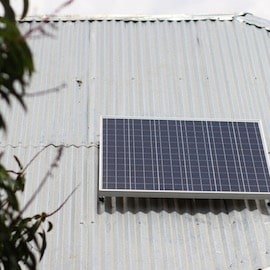Sorry, ‘Feel Good’ Investors: Deep Impact Requires Concessions
“We thought that the only way to achieve large-scale impact was to build large commercial enterprises that could generate enough cash to support both organizational growth and market-level impact. But as we began investing more heavily and more directly in early-stage companies that targeted less advantaged populations in emerging markets, we began to notice the complexity of these market segments. Again and again, we saw phenomenal entrepreneurs who were developing innovations with transformative potential – but many of them needed more patience and more upfront capital than a commercial investor would typically provide.”
From “Across the Returns Continuum,” SSIR, by Matt Bannick, Paula Goldman, Michael Kubzansky & Yasemin Saltuk, Omidyar Network
Amidst a steady stream of hyperbolic, content-free puff pieces all heralding that the impact investment industry has gone “mainstream,” Omidyar Network’s recent article (excerpted above) in the Stanford Social Innovation Review, “Across the Returns Continuum,” is an honest and nuanced treatise outlining their strategic framework. It is a must-read for any investor or philanthropic funder that seeks to develop a serious strategy around investing for impact.
Those of us actively allocating capital to fragile enterprises in developing markets recognize that those people who promise comfortable market-rate returns while solving global poverty are the equivalent of diet gurus promising that one can lose weight while eating limitless amounts of chocolate cake. As former Omidyar Network India Managing Director Jayant Sinha (now Indian minister of civil aviation) said on stage at the recent India Impact Investing Conclave, “Do not kid yourself that this is commercial investing, you are here to deliver impact.”
Yes, we certainly acknowledge that there are numerous ESG-oriented public equity and bond funds, as well as U.S. and European focused private equity and credit portfolios geared toward generally responsible and beneficial companies that are delivering perfectly solid returns. We get it. We are investors in many of them. If that is the entirety of your intended scope of impact, then mission accomplished.
However, for those with the flexibility and fiduciary responsibility to pursue direct impact in truly marginalized and underserved regions and communities, it’s necessary to grapple with the reality that these contexts often require concessionary rates of return, an appetite for a range of risks (geopolitical, currency, security, etc.), as well as a need for creative structures and patient timelines. We find it unhelpful when advisors, fund managers and even asset owners declare that you can have it all, when the reality is that it depends on what “it” is.
We strongly agree with Omidyar Network’s sentiments that concessionary should never mean sacrificing rigor of analysis, and that care should be taken to avoid distorting markets where they exist. We are increasingly thinking about our own internal frameworks that focus not only on how to locate individual investments on a return vs. impact continuum, but also how to assess the capital efficiency of dollars for impact. We are sympathetic to the notion that traditional philanthropic interventions have a great deal of wasted spending, but we are also finding similar wastage in over-exuberant venture capital invested in emerging markets.
As an example of the direction that we are moving, we recently completed a loan agreement with One Acre Fund, one of the most thoughtful nonprofit social enterprises that we have found working on livelihood improvement for smallholder farmers in sub-Saharan Africa. When we first approached them more than 18 months ago, we spoke of our desire to help move the market in a commercial direction through more market-rate loan terms.
One Acre Fund co-founder Andrew Youn challenged us directly to think differently. His (paraphrased) plea was that there was plenty of impact money chasing the mythical idea of reasonable returns with deep social impact. To make a real difference, he proposed that we would need to take more risk and accept the realities of more concessionary returns. In lieu of financial returns, however, he suggested that we should expect capital-efficient, scalable returns in the form of increased income and improved livelihoods for the communities that One Acre Fund works in.
It took us another 12 months of experimental lending in a variety of different ways before we began to fully recognize the accuracy of Andrew’s original plea. Our just-completed loan with One Acre Fund, a $2 million program-related investment from our foundation, is in no way “market rate” (as if that was an easily definable thing anyhow!). It is, however, an example of what we believe impact investors worthy of calling themselves “impact” investors should be pursing more aggressively.
There is a big crowd on the side of the return continuum seeking a feel-good, low-risk way of earning an invitation to speak at the next GIIN or SOCAP conference. There are far fewer willing to swim in the deep end of the risk continuum. We will be treading water out there with Omidyar Network and those other funders willing to make the necessary and realistic concessions required to generate impact in the most underserved places in the world. We would invite others to join us.
Greg Neichin and Diane Isenberg are directors at Ceniarth.
Photos of Ceniarth’s last field visit with One Acre Fund, courtesy of Ceniarth
- Categories
- Investing



